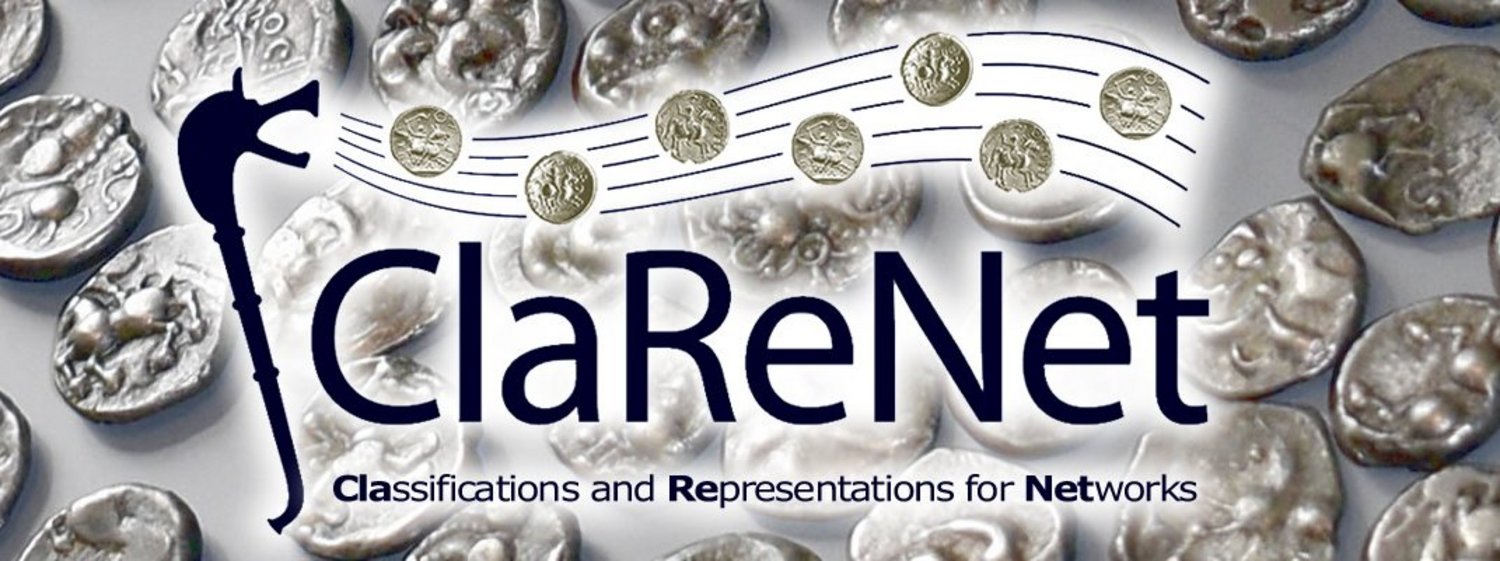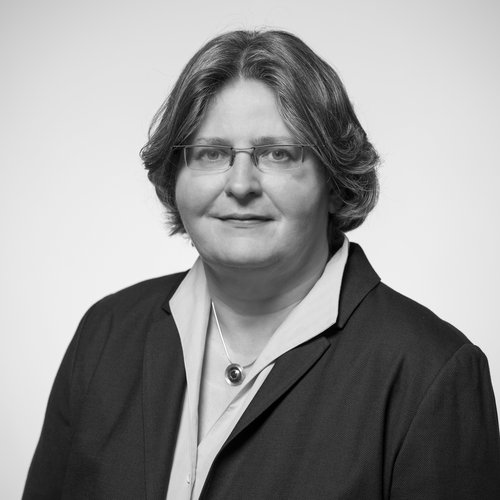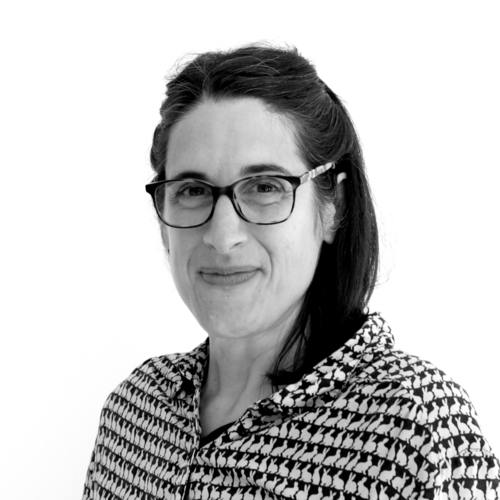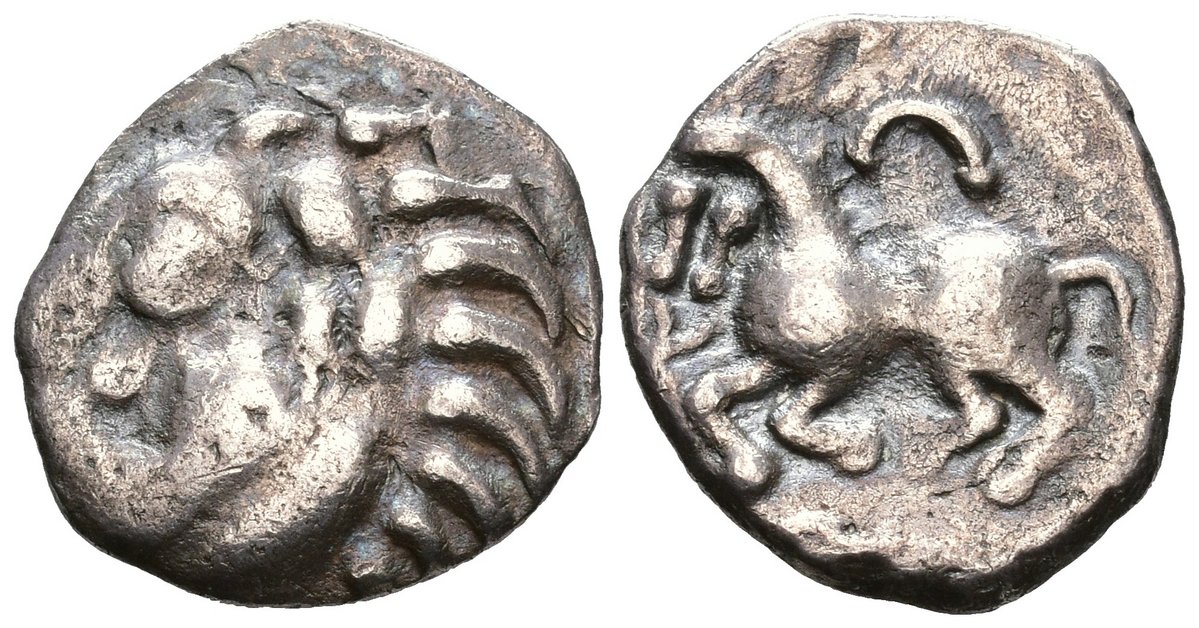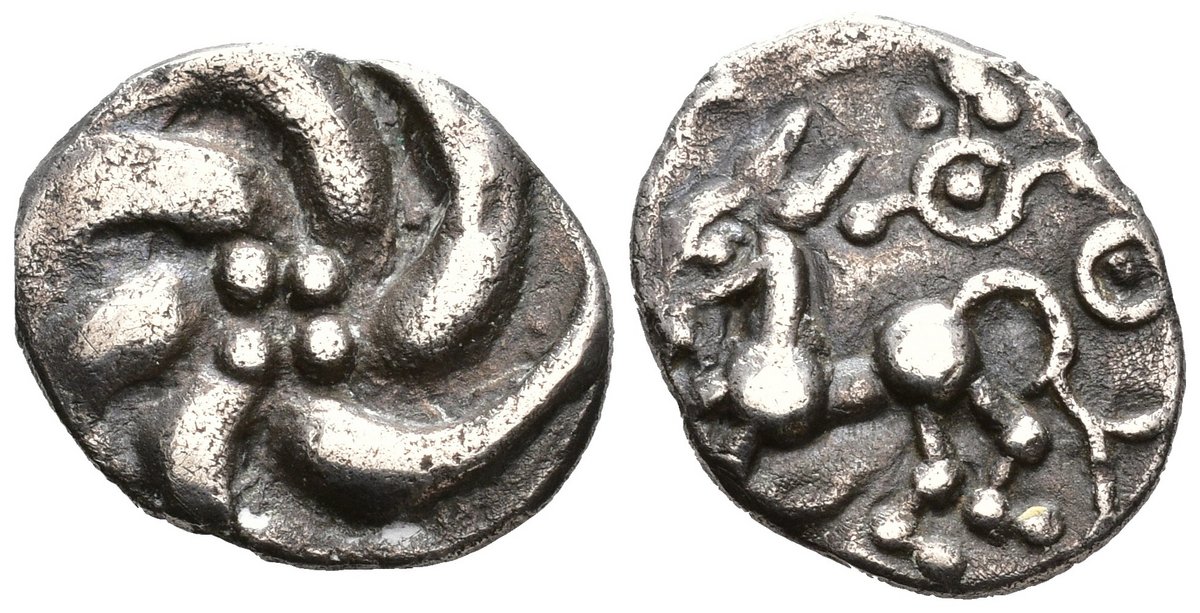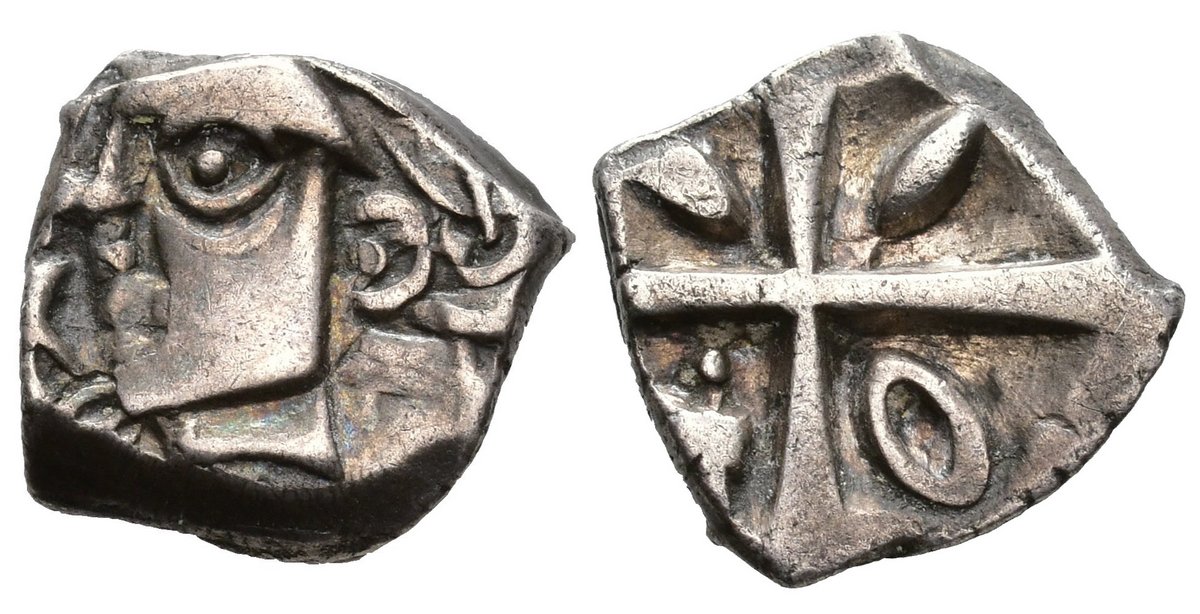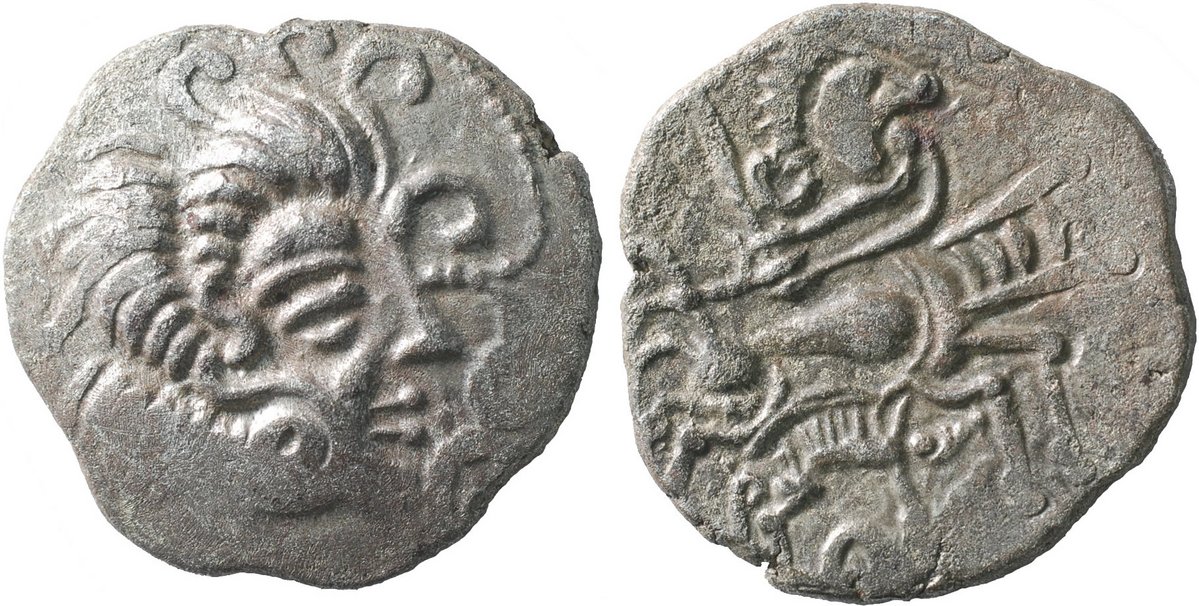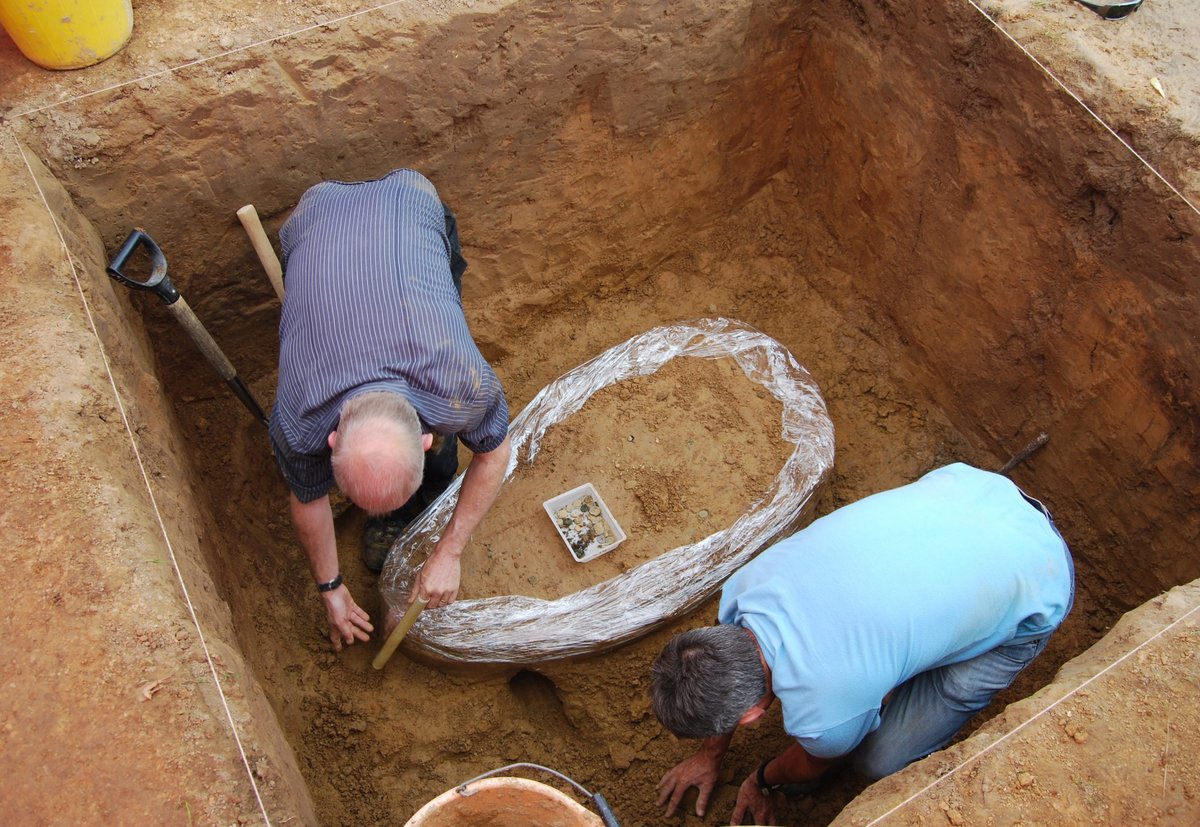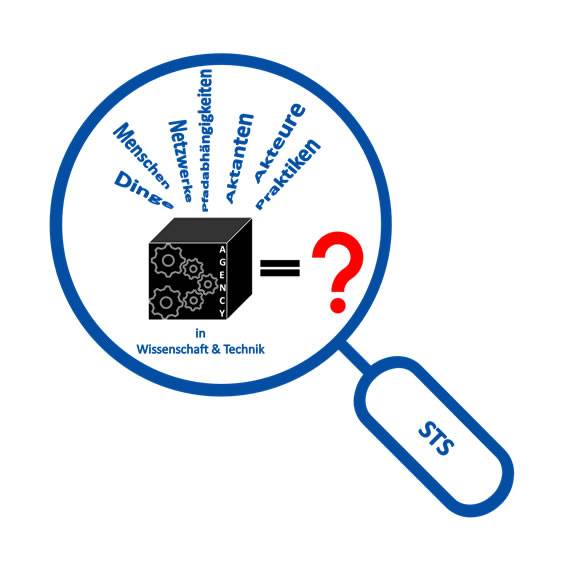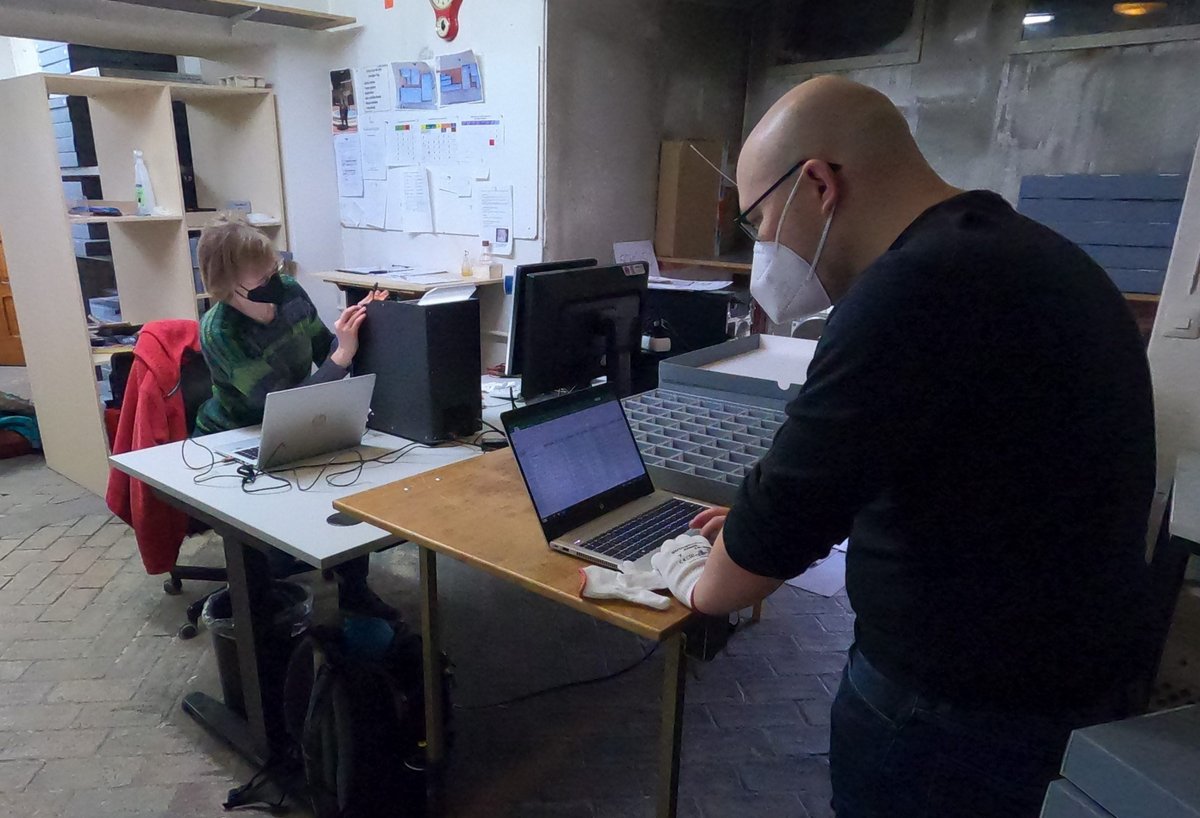ClaReNet - A project on digital knowledge practices using the example of Celtic numi
The limits and possibilities of classification are to be investigated in the ClaReNet project, which has been running at the RGK and the Big Data Lab of the Goethe University Frankfurt since February 2021, using three Celtic coin series. These knowledge generation practices are documented in an accompanying science and Technology study and analyzed for changes. ClaReNet is funded for three years by the Federal Ministry of Education and Research within the framework of the program “Promotion of research and development projects for the theoretical, methodological and technical further development of the digital Humanities”.
Object epistemologies and knowledge practices once, today and in the future
Object epistemologies ask "about the 'what', the 'how', the 'why (so)' and the 'why' of past and present discourses, conceptualizations of and routines of action on, with and as a result of things." (Hilgert 2018, 15). The various object-epistemological approaches and media changes that have shaped archaeology and numismatics since their beginnings have always also had an influence on how archaeological finds and coins have been and are being arranged and represented. Especially the computer-aided methods developed in recent decades have greatly changed the classification and representation of objects. In particular, automated image recognition and the provision of networked data (LOD – linked open data) should be mentioned here. Therefore, the question arises when and how the mass processing of data into objects makes sense and what impact this has on the processes of cognition and research practices in the humanities. The aim of ClaReNet is to systematically discuss and test the potentials, but also the limits of the IT-supported classification and representation of things using the example of selected Celtic coin series, taking into account and reflecting on past research practices and in an interdisciplinary dialogue. So far, it has been unclear whether images should be taken into account more in the future instead of texts, values and context information.
The third-party funded project thus fits perfectly with the fourth thematic focus of the research plan (2021-2025) of the RGK "Archaeological Epistemes in Development: On landscapes, objects, data and their networking". It has emerged from the long-standing commitment of the RGK in digital numismatics and the reflection and networking project "Ding-Editions. Vom archäologischen (Be-) Fund übers Corpus ins Netz“ as well as an interdepartmental research data management project on authority data in archaeology led by the Central Scientific Services of the DAI. This in turn contributes to the consortium initiative for the National Research Data Management NFDI4Objects.
Three Celtic coin series as case studies
Celtic coins pose a particular challenge for automated classification, because they are often not very standardized and undergo a long stylistic and iconographic development. As an example, three coin series were selected for the ClaReNet project, which, due to their different minting, standardization and stylistic development, offer various problems for classificatory classification and data modeling:
Büschelquinar, sog. Prototyp. Auf der Vorderseite ist ein nach links blickender Kopf zu erkennen, auf der Rückseite ein nach links springendes Pferd, darüber ein Torques (ein Halsring). Silber. Aufbewahrungsort: Römisch-Germanisches Zentralmuseum Mainz. Inv. Nr. O.25668 © ClaReNet, Danner QuickPX-Travel, RGK// C. von Nicolai
The first series of coins that we will analyze are the so-called silver tuft quinars (fr. monnaies à rameau, engl. bushel series) (Fig. 1 and 2). They were in the 2nd and 1st centuries. it is distributed mainly in Bavaria, Baden-Württemberg, Switzerland, Western Austria, the Czech Republic and Slovakia. The tuft seminars are a challenge due to the large number of existing typological structures and object approaches. Due to the widespread distribution, these coin series have often been examined and systematized regionally by experts. Thus, there are various typologies, some of which are not congruent. With the help of automated procedures, we want to find connections between the different typologies and put them in relation.
Jüngerer Büschelquinar der Gruppe E nach Kellner 1990 (https://zenon.dainst.org/Record/000150616). Aus den Locken des Kopfes hat sich ein abstrakter Büschel entwickelt, von dem diese Münzserie ihren Namen hat. Auch das Pferd ist stärker abstrahiert dargestellt, über ihm sind Kreis- und Punktsymbole zu erkennen. Aufbewahrungsort: Römisch-Germanisches Zentralmuseum Mainz. Inv. Nr. O.25667 © ClaReNet, Danner QuickPX-Travel, RGK// C. von Nicolai
The second series of coins investigated in the project are the so-called monnaies à la croix (cross coins), which are mainly found in the south-west and south of France (Fig. 3). Due to its long minting period and the wide geographical distribution, this coin series has an exceptionally large variety of types. In 2017, our cooperation partner Eneko Hiriart published a new typology for the cross coins and collected numerous coin photos, which he makes available to ClaReNet. This series of coins is distinguished by its variety of features. Our focus is on feature combinatorics and group classification by artificial intelligence (AI). The results will then be compared with the classification of Eneko Hiriart.
Monnaie à la croix der ‘kubistischen’ Serie. Die Vorderseite zeigt einen stilisierten Kopf nach links, vor diesem sind zwei Delphine zu erkennen. Auf der Rückseite sind in einem Kreuzmotiv, dem diese Münzserie ihren Namen verdankt, eine Axt sowie drei Ellipsen dargestellt. Die monnaies à la croix wurden ab 240 v. Chr. über eine Zeitspanne von fast 200 Jahren geprägt. Silber. Aufbewahrungsort: Römisch-Germanisches Zentralmuseum Mainz. Inv. Nr. O.13457 © ClaReNet, Danner QuickPX-Travel, RGK// C. von Nicolai
The third series of coins will be processed in the project mainly on the basis of the Le Câtillon II treasure trove from the Channel Island of Jersey (Fig. 4). With 70,000 coins, especially staters and quarter staters of the Coriosolitae, this is the largest Celtic coin treasure trove ever found, so that its processing with ‘classical’ knowledge practices of numismatics (such as analog stamp analysis) would be a decades-long undertaking for our cooperation partner Philip de Jersey (Fig. 5). It is necessary to process this mass with automated image recognition methods and to analyze the applicability of classification.
Sogenannter Stater der Coriosolitae, Klasse VI (CATII-H-01081). Auf der Vorderseite ist ein Kopf nach rechts dargestellt. Charakteristisch für die Klasseneinteilung ist die Nase, hier in Form einer umgekehrten Zwei. Auf der Rückseite ist ein gezügeltes Pferd mit Menschenkopf nach links zu erkennen, davor eine Art Leiter, darunter ein Wildschwein. Billon. Dm.: 22,5 mm. Aufbewahrungsort: Jersey Heritage © Jersey Heritage// Ph. de Jersey
Blockbergung des Schatzfundes Le Câtillon II auf der Kanalinsel Jersey. Mit rund 70.000 Münzen handelt es sich um den größten bislang entdeckten keltischen Münzschatz © Jersey Heritage// Ph. de Jersey
Artificial intelligence and the classification of Celtic coins
We approach these different challenges of the coin series with methods and tools from the field of artificial intelligence (AI). Classification, clustering and pattern recognition methods are particularly suitable for the recognition of congruence, the verification of combinations of features and for large amounts of data, since you can access photos of objects without the detour via text. In this area, corresponding methods have already been developed in the BigDataLab of the Goethe University Frankfurt in projects with Roman and Greek coins.
Convolutional Neural Networks (CNN) are used for the experiments with the coin series. Nowadays, these are the most commonly used algorithms in the field of image classification. A CNN has different layers that an image has to go through. Features are extracted and weighted by these layers. Finally, the image is assigned to an existing class.
For the application of a CNN, a previously defined classification is usually necessary. To get around this, a new approach called deep clustering uses the combination of CNNs and clustering algorithms. These approaches will also be applied and investigated in the ClaReNet project. This makes it possible to obtain an independent classification by the AI through independent pattern recognition and weighting. The participating scientists must then look at and evaluate the classification of the coins formed by the AI. The decisive factor here is the extent to which the assignments to individual groups are justifiable for the numismatists.
Representation on the net
ClaReNet will be part of the digital numismatic world in several ways. The finds from Germany (for example the Celtic coins from Manching), which have already been published by the RGK analog, are published online via AFE (Antique found coins in Europe). In addition, we are developing a virtual composite catalog of Celtic coinage called Online Celtic Coinage. He uses the vocabulary and ontology of nomisma.org and is linked to other open data resources such as the Getty AAT, the DARIAH-EU Backbone Thesaurus, the authority data portal of the Berlin Coin Cabinet and the iDAI.world links. In this way, all generated data is made available open access in accordance with the LOUD and FAIR principles. With the database management system Dédalo, a backend catalog is first created, which enables the curating of coin data by numismatics and which IT can use in evaluation phases. Furthermore, the backend catalog is the foundation for creating other frontend catalogs such as OCC.
Not just something for the natural sciences - a science and technology study for the humanities
Was untersucht eine STS? © RGK// J. Tietz
Within the framework of the ClaReNet project, the production and circulation of knowledge will be reflected, among other things, on the basis of a science and technology study (STS) (Fig. 6). Their goal is to contribute to a documentation about the changes in the processes of cognition through the use of technical devices, digital tools and algorithms. Under the title "Path Dependencies, Actor Networks, Digital Agency. An STS on classifications and representations of Celtic coins on the net“ – In short: PANDA-STS – the working processes and knowledge practices of the participating researchers and cooperation partners are monitored and analyzed in an observational manner. It asks about old and new path dependencies that arise in the course of decisions during research. The changes in the actor networks during the introduction of technical devices - such as the danner system (Fig. 7) - and AI, as well as researching the gradual forms of practical participation up to the power of action (keyword digital agency).
Für die Analyse stehen Fotoaufnahmen von circa 80.000 keltischen Münzen zur Verfügung. Viele Bilder werden dem Projekt von den Projektpartnern zur Verfügung gestellt, andere hingegen mit einer mobilen Münzfotoanlage, einer Danner QuickPX-Travel, neu fotografiert, wie hier im Römisch-Germanischen Zentralmuseum in Mainz © ClaReNet, RGK// J. Tietz
The blog and the wiki about the project
If you want to learn more about ClaReNet, you can find it on our blog clarenet.hypotheses.org not only information about events and videos, but also regular contributions about our activities and knowledge practices. By the way, we are also developing a wiki on the central terms of the project, which will then be published on the blog with an indication of literature.
Cooperation partner
Within the framework of the project, we cooperate with a large number of project partners and institutions at home and abroad:
Bibliothèque nationale de France, Département des Monnaies, médailles et antiques (Dr. Frédérique Duyrat)
Archaeological State Collection Munich (Dr. Bernward Ziegaus)
Inventory of found coins of Switzerland (Dr. Michael Nick)
Université Bordeaux Montaigne (Dr. Eneko Hiriart)
States of Guernsey, Culture and Heritage (Dr. Philip de Jersey)
Goethe University Frankfurt, Institute of Archaeological Sciences, Department II: Archaeology of Coins, Money and Economics in Antiquity (Prof. Dr. Fleur Kemmers)
Technical University of Darmstadt, Department of Classical Archaeology (Prof. Dr. Franziska Lang)
Berlin-Brandenburg Academy of Sciences and Humanities, Corpus Nummorum (Dr. Ulrike Peter)
Römisch-Germanisches Zentralmuseum Mainz
Georg-August-Universität Göttingen, Institute for Digital Humanities
Nomisma.org
ARIADNE
SEADDA
University of Oxford, Institute of Archaeology, Celtic Coin Index
Academy of Sciences and Literature Mainz, Digital Academy
We are also part of the consortium project NFDI4Objects.
Project staff
RGK:
Mirko Brand
Kerstin P. Hofmann
Markus Möller
Caroline von Nicolai
Katja Rösler
Julia Tietz
David Wigg-Wolf (Project Manager)
Goethe University Frankfurt:
Chrisowalandis Deligio
Karsten Tolle
